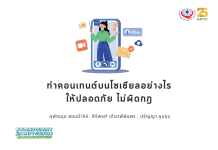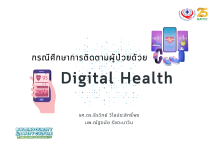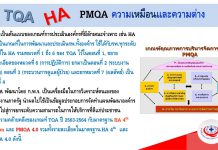Stigma in healthcare settings, particularly against people living with HIV/AIDS, is a significant barrier to accessing quality care and achieving optimal health outcomes. Discrimination and prejudice from healthcare providers can discourage patients from seeking necessary treatment, adhering to medications, and engaging in preventive measures. In Southeast Asia, where the HIV epidemic remains a pressing issue, addressing stigma is crucial to ensure equitable and effective healthcare delivery.
This presentation introduces a framework called QIS+D to tackle stigma in healthcare settings. Let’s break down the details of this framework and the presentation’s key points on its application:
QIS+D Framework:
QI (Quality Improvement): This is the foundation of the framework. It emphasizes using data and ongoing analysis to identify and address problems.
D (Disaggregation): Data is not just collected overall, but broken down by specific populations. This ensures the experiences of marginalized groups, like people with HIV, are not masked by overall averages.
S (Stigma Measurement): The framework goes beyond traditional quality measures. It incorporates specific tools to assess stigma, including:
Surveys for healthcare workers: These surveys, based on the Laura Knight-Blade framework, ask about workers’ attitudes and behaviors towards patients with HIV.
Patient feedback: Patients are directly asked about their experiences through surveys, interviews, or comment boxes.
Health literacy data: Assessing patients’ understanding of their condition can help identify areas where stigma might be fueled by misinformation.
Addressing Challenges:
The presentation acknowledges challenges in implementing the QIS+D framework:
Non-linear Measures: Stigma is not easily captured by a single number. It requires collecting and analyzing qualitative data, which demands more effort.
Patient and Consumer Involvement: Including patients and consumers in quality improvement activities might not be part of the existing healthcare culture. Encouraging participation is crucial.
Overcoming Challenges:
The presentation suggests ways to address the challenges:
Leadership Commitment: Strong leadership support is essential to ensure stigma reduction goes beyond HIV programs and becomes a systemic focus.
Continuous Monitoring and Adaptation: Regular monitoring of stigma levels and program effectiveness is necessary. The framework encourages adaptation of interventions based on the collected data.
Community Engagement: Building partnerships and involving the community is key to address stigma outside the healthcare facility and create a more supportive environment.
Overall Takeaway:
The QIS+D framework offers a comprehensive approach to reducing stigma in healthcare. By disaggregating data, incorporating stigma-specific measures, and involving different stakeholders, the framework allows healthcare facilities to identify and address discriminatory practices. The presentation emphasizes the importance of leadership commitment, continuous improvement, and community engagement for successful implementation. This method highlights that tackling stigma requires changes not just within individual healthcare workers, but throughout the healthcare system and the surrounding community.
Addressing stigma in healthcare settings is vital to ensure people living with HIV/AIDS and other marginalized groups receive quality care without fear of discrimination. The QIS+D framework provides a promising approach to systematically identify and reduce stigma, ultimately contributing to better health outcomes and health equity in Southeast Asia.
Transcribed and summarized by Songsak Thongsanit














































